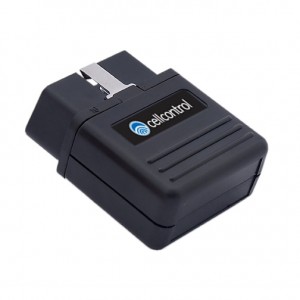Step-by-Step | Prepare Spigen Premium Air Vent Magnetic Car Mount and iPhone 6 Plus
We recently purchased and reviewed the Spigen Premium Air Vent…
Following the announcement that Cellcontrol and Esurance will provide teenagers a benefit for taking action to drive distraction-free, I wanted to know more about the technology behind the solution. The companies are teaming up to give teenage driving policy holders a free Cellcontrol unit free of charge.
I caught up with Cellcontrol CEO, Robert Guba, to learn more about the company behind the world’s leading technology to stop distracted driving.
According to the company’s website, Cellcontrol’s non-pairing Bluetooth signaling technology integrates with a vehicle’s onboard electronics and eliminates the driver’s ability to talk, text, email and browse on multiple devices while the vehicle is in motion.
The key here is ‘multiple devices.’ Traditional Bluetooth pairing only allows one device to pair at a time. Cellcontrol’s technology does not go into pairing, but rather uses the Bluetooth signal to block all devices you may have in the vehicle – cell phone, tablet and laptop.
Cellcontrol is automated self-control
Unlike mobile apps that require user acceptance and activation, Cellcontrol is a plug-in-and-go technology that detects and protects distraction from using cell phones, laptops or tablets.
“At speed one it enforces the policy – it pushes out without having to have user acceptance.” -Rob Guba, CEO, Cellcontrol
“Our system allows you not only to address mobile devices but also other devices,” added Guba. “Our architecture properly identifies the vehicle you’re in, communicates the state of that vehicle to the device that you’ve got, and applies a policy to the device, predetermined by a parent or employer.”
Cellcontrol’s technology is different from mobile applications, however. “It’s not just an app on the phone,” Guba explained. Subscribers can still fully access their devices when they’re in motion on a plane, train or bus. The limitations are truly limited to the vehicle a user drives.
Cellcontrol has a patent on non-pairing Bluetooth communication and several other patents pending. “It properly identifies context,” said Guba. “That’s where we greatly differ from other products out there – the communication from the car to the device.” The technology allows a trigger device to connect with both smartphones and ‘dumb’ phones. Basic cell phones like the Casio GzOne Ravine2, Samsung Convoy2, Samsung Intensity and other non-smartphones are supported.
User experience key to Cellcontrol’s success
“We take technology seriously,” Guba emphasized, detailing how users want a seamless technology that works every time in real-world applications. “The Cellcontrol trigger has to work every time,” he said. “The first time a driver rolls off the line and their device doesn’t automatically go into blocking, they will become frustrated with the product and likely stop using it.”

The Cellcontrol trigger plugs directly into your car’s ODB or J-Bus port.
I recently participated in a demonstration of the product from Kevin Coppollino, Vice President of Corporate Development for the Baton-Rouge based company, at the FCC distracted driving technology showcase.
The Cellcontrol application on your device locks within three to five seconds after the car picks up speed. Drivers get a blue lock screen that prevents them from seeing any incoming texts or phone calls, depending on the policy that’s set from the web-interface back-end tool. “When someone wants to get around the system we’ve built measures to detect that,” said Guba.
Personal vs. Commercial
Cellcontrol is a personal solution, but the company has also had a lot of success with fleet vehicle drivers. “We have a lot of commercial accounts,” Guba told us. Early on those customers tended to be in the high-risk industries that took driver safety more seriously. These industries were the early adopters of Cellcontrol’s technology, but now, the company is seeing a broader spectrum of industries.
The consumer side is a newer venture for Guba’s company. “We recently moved into [the consumer] space, but have seen heavy adoption,” he said. “Most implementations are for teenage drivers or for the full family.”
That’s where the Esurance partnership comes in, helping Cellcontrol extend their product directly to customers. Guba noted that his company will have a variety of new partnerships to announce in the near future.
Other implementations of their product have been for local police forces. For example, a New Orleans Parrish police department is moving toward using Cellcontrol. A police force based in Boston also tested it internally and provided positive feedback.
“While we’re a business, I’m a parent, my kids actually drive – we realize that this is something that’s life altering” –Robert Guba, CEO, Cellcontrol
Guba also shared that his company will be rolling out new products that will better identify drivers. A big goal in the technology industry, as it relates to distracted driving, is to precisely identify who’s the driver and who isn’t so that anti-distraction applications can be more autonomous. A secondary goal for these groups is to have that technology push state laws to the system so that when drivers cross state lines they remain in compliance.
And Guba isn’t just capitalizing on distracted driving. He practices what he preaches. Cellcontrol has a company-wide anti-distracted driving policy. Employees are regularly informed and educated about the policy and the dangers of texting and talking while driving.